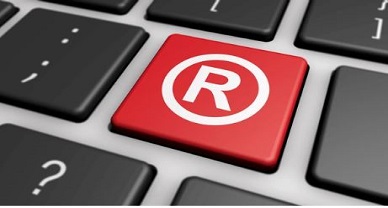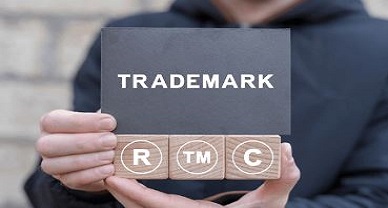Trademark Abandonment: Causes and Consequences
Introduction
Trademarks are valuable assets for businesses; they reflect the identity, reputation and goodwill that a company builds with its target consumer. They can include anything from a company’s name and logo to slogans, product packaging or even distinct sounds or colors. However, filing for a trademark is one thing; maintaining its continued existence is equally essential. Failure to meet certain legal obligations, or the misuse of the trademark, puts the trademark owner in danger of losing exclusive rights on the same in a process known as “trademark abandonment.”
This blog will explain causes as well as consequences of trademark abandonment, and will provide insights into how corporations can keep their trademarks effectively to prevent the loss of this valuable intellectual property.
What is meant by trademark abandonment, then?
Trademark abandonment is defined as a situation wherein the owner of a trademark rights loses such rights due to non-use of such trademark or failure to renew it or for other legal grounds. In the U.S., trademark abandonment is defined by the Lanham Act as a ceasing to use a mark in commerce coupled with an absence of intention to resume use. Once a trademark is considered abandoned, it enters into the public domain, and anyone else can lay claim to it.
Two of the main elements that determine trademark abandonment are as follows:
- The absence of the use of the mark Where the owner of the trademark ceases to use the mark in the course of commerce.
- Lack of Intent to Resume Use: There is no demonstrated intent to use the mark again in the foreseeable future.
- A presumption of abandonment: Generally in the U.S., an unused trademark for three consecutive years is presumed abandoned, and the owner can rebut this presumption with evidence.
Causes of Trademark Abandonment
Trademark abandonment arises from many factors ranging from practical business decisions to legal faux pas. Below are some of the primary causes that lead to trademark abandonment:
- Non-usage of the Trademark
Abandonment is mainly due to a failure to use the trademark in commerce. Trademark rights are based on actual use, not merely registration of the mark. A company will lose its trademark rights if it discontinues its operations, ceases production of a product, or stops using a particular logo or slogan.
Similarly, an old mark could be declared abandoned if a company undergoes a complete change of branding and fails to keep the old trademark in active use.
- Non-Renewal of Trademark Registration
Trademarks must, however, be renewed every now and then for registration to subsist. In the United States, the trademark holder must file a declaration of use and renewal between the 5th and 6th year after registration, and then every ten years thereafter. The failure to comply with these time limits will automatically result in abandonment, even if the mark is still in use.
- Genericide
Genericide occurs when the trademark becomes so widely used that it loses its own distinctiveness and is considered as a generic term for the product or service it represents. Aspirin, escalator, and thermos would be examples of trademarks that have been treated as generic terms.
Instead, it becomes an improper source identifier once consumers come to create that be a general term of trademark.

- Inability to Enforce Trademark Rights
Use of the mark loses its distinctiveness if the trademark owners do not enforce their trademarks against unauthorized third-party use; in this situation, nondistinctive use leads to abandonment.
For example, if an organization has an open logo or name and allows similarly competitors to use it, the mark’s exclusivity would be weaker even abandon it over time.
- Voluntary abandonment
A trademark may be intentionally abandoned by a particular business in some situations, such as when it may decide to remove a product line or change the form of its brand. In such a case of a voluntary abandonment, the trademark owner is required to inform an appropriate trademark office, such as the U.S. Patent and Trademark Office (USPTO).
- Closure of Business or Bankruptcy
A trademark will be likely abandoned if the company goes out of business or declares bankruptcy unless it is sold or transferred to an entity. Without a new owner to use the trademark in commerce, it languishes and becomes available for others to register.
Consequences of Trademark Abandonment
Abandonment translates to loss of rights for the trademark. Abandoning a trademark can have severe adverse effects, which could be legal and commercial. The outcome of abandonment is as follows:
- No more exclusive rights
Abandonment means loss of exclusive rights to the trademark. This implies that the original owner is now unable to stop anyone from using the mark, which would potentially lead to dilution in the identity and reputation of the brand.
- Competitors can claim the trademark
Once abandoned, the trademark opens floodgates for any company to register. Competitors, therefore, can take that to their advantage, racing to register the trademark before any third party claims it.
For instance, if truly an established company has abandoned a trademark and the competitor succeeds in re-registering it, then that new owner can confuse the consumers or take the advantage of goodwill with the original brand enjoyed.
- Decreased brand equity
Marks are valuable business assets creating business equity, in addition to abandoning lowering the overall market value of a company, especially where the abandoned trademark was critical to a company identity or a popularly known quality indicator.
- Expensive Rebranding:
On the abandonment of a trademark, the original owner is sometimes forced to reinvent the most cases for expensive rebranding. Rebranding usually entails changing goods logos, marketing material, and packaging, among other things, along with developing consumer trust around the new brand.
- Harm to Reputation
Abandonment of a trademark casts aspersions on the reputation of a company where the abandoned trademark is obtained by competitors or counterfeiters. Consumers lose trust in the brand as being inconsistent or unprofessional due to the neglect of the trademark.
- Legal Wrangling to Retrieve the Mark
In the event that a trademark is abandoned and subsequently registered by another party, the original owner will be entangled with a cumbersome legal process for the cogent retrieval of the trademark. The person has to prove prior use or that it has not essentially been abandoned. This is really complicated and expensive.
How to Avoid Trademark Abandonment
A foolproof approach in preventing trademark abandonment is the establishment of plans for using and protecting the trademarks. Here are some practical steps:
- Use it Consistently in Commerce
Ensure the active use of the trademark in commerce. Even though a product has been discontinued, try and use the trademark within a relevant context to fit the proof of continuous use.
- Timely Renew Registrations
Add reminders to keep track of renewal deadlines-schedule important dates on a calendar and set reminders to file the required documents with the appropriate trademark office.
- Monitor for Infringement
Tracking use of the trademark in the marketplace will immediately follow by sending cease-and-desist letters and pursuing other legal action when necessary.
- Educate Consumers
Avoid genericide by teaching the proper use of a trademark-even embedded in the general public use, such as using a trademark as an adjective, such as “Kleenex tissues” instead of Kleenex, and trademark symbols (™ or ® on brand collateral).
- Maintain Records
Carefully record the way the trademark is utilized in commerce in any possible media such as promotional, sales, or marketing materials. This record may become important in countering any claims of abandonment.
- Conduct Regular Audits
Go ahead and do an audit on a regular basis for your trademark portfolio, ensuring active use, proper maintenance, and alignment of investments to business strategy.
Conclusion
Abandonment of trademarks is something every business can avoid at all costs. Once a firm understands the causes of abandonment, such as non-use, failure to renew, and lack of proper enforcement, it will be proactive in protecting its trademarks and ensuring its brand value is never compromised.
The loss of exclusive rights to a trademark, brand equity, and consumer trust are unavoidable consequences of abandonment and mark vigilance in trademark maintenance. Businesses can adopt robust strategies of monitoring, enforcing a trademark, and renewal so that their intellectual property remains valued as an asset for years.
In a marketplace increasingly marked by competition today, protecting a trademark has ceased to be a responsibility to the law but has also become very important regarding brand management. Hence, such marks, if abandoned, would deprive businesses of their grip in the market, as well as the sentiments of customers.
Author: Daisy Banakhede, in case of any queries please contact/write back to us at support@ipandlegalfilings.com or IP & Legal Filing
References-
https://depenning.com/blog/what-is-an-abandoned-trademark-a-clear-explanation/#:~:text=Consequences%20of%20an%20Abandoned%20Trademark,same%20goods%20(or)%20services.
https://sierraiplaw.com/trademark-abandonment/
https://trademarkraft.com/blogs/news/abandonment-of-your-trademark-what-it-means-and-how-it-can-be-remedied
https://www.cohnlg.com/trademark-abandonment-and-the-loss-of-trademark-rights/


